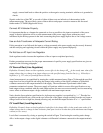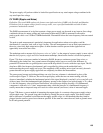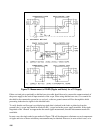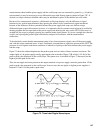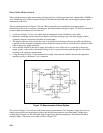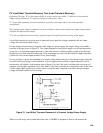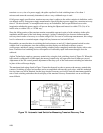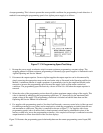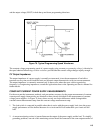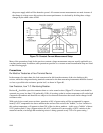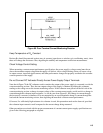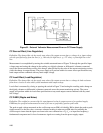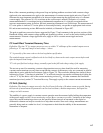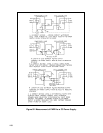111
CV Drift (Stability)
Definition: The change in output voltage (dc to 20Hz) for the first eight hours following a 30 minute warm-up
period. During the warm-up and measurement interval all parameters, such as load resistance, ambient
temperature, and input line voltage are held constant.
Drift includes periodic and random deviations over a bandwidth from zero frequency (dc) to an upper limit of
20Hz. The 20Hz upper limit for drift must coincide with the lower frequency limit for PARD, so that all
deviations under constant operating conditions are covered by specifying one or the other.
This measurement is made by monitoring the output of the power supply on a differential voltmeter or digital
voltmeter over the stated measurement interval; a strip chart recorder can be used to provide a permanent
record. A thermometer should be placed near the supply to verify that the ambient temperature remains constant
during the period of measurement. The supply should be put in a location immune from stray air currents (open
doors or windows, air conditioning vents); if possible, the supply should be placed in an oven which is held at a
constant temperature. Care must be taken that the measuring instrument has a stability over the eight hour
interval which is at least an order of magnitude better than the stability specification of the power supply being
measured. Typically, a supply may drift less over the eight hour measurement interval than during the 112 hour
warm-up period.
Drift measurements are frequently made while the supply is remotely programmed with a fixed wire-wound
resistor, thus avoiding accidental changes in the front panel setting due to mechanical vibration or
"knob-twiddling."
CV Temperature Coefficient
Definition: The change in output voltage per degree Celsius change in the ambient temperature following a 30
minute warm-up. During the measurement interval the ac line voltage, load resistance, and output voltage
setting are held constant.
The temperature coefficient of a power supply is measured by placing the power supply in an oven and varying
it over any temperature span within its rating. (Most Agilent laboratory type power supplies are rated for
operation from 0°C to 55°C). The power supply must be allowed to thermally stabilize for a sufficient period of
time at each temperature of measurement.
The temperature coefficient specified is the maximum temperature dependent output voltage change which will
result over any 5°C interval. The differential voltmeter or digital voltmeter used to measure the output voltage
change of the supply should be placed outside the oven and should have a long term stability adequate to insure
that its drift will not affect the overall measurement accuracy.
CV Programming Speed
Definition: The time required following onset of a step change in the programming input for the output to
change from an initial value to within a certain band of the newly programmed value. This band is typically
specified in millivolts for a well regulated CV supply, and in milliamps for a CC supply.
The measurement is made by monitoring the output voltage while rapidly changing a remote programming
resistance or voltage. Up-programming requires that the remote programming source (RP in Figure 77) be
varied from zero ohms to a value that will produce maximum rated output voltage, while down-programming
involves changing the resistance from the value that produces maximum rated output voltage to zero ohms. As
shown on Figure 77, the load resistance RL is included when checking up-programming and is removed for




